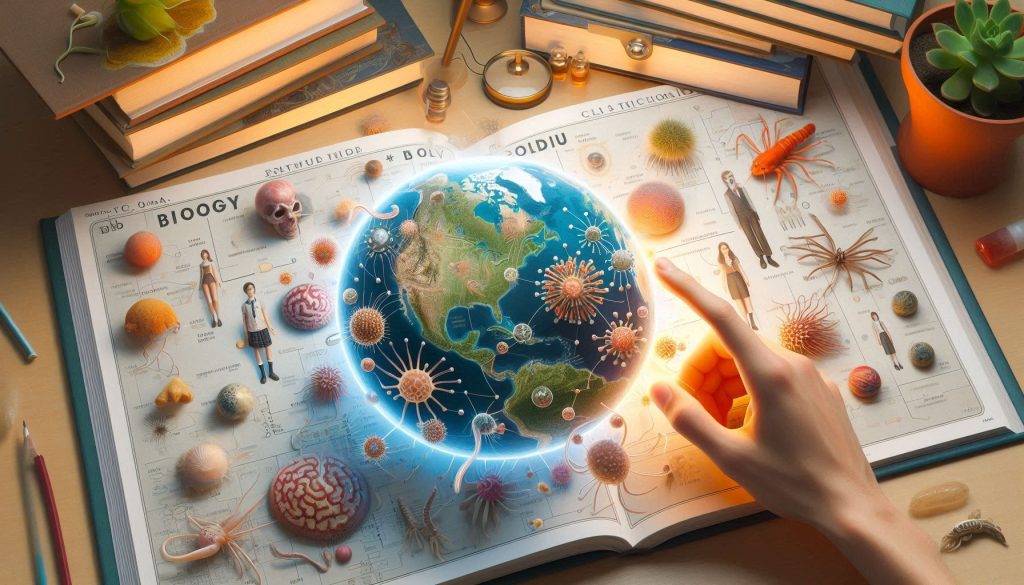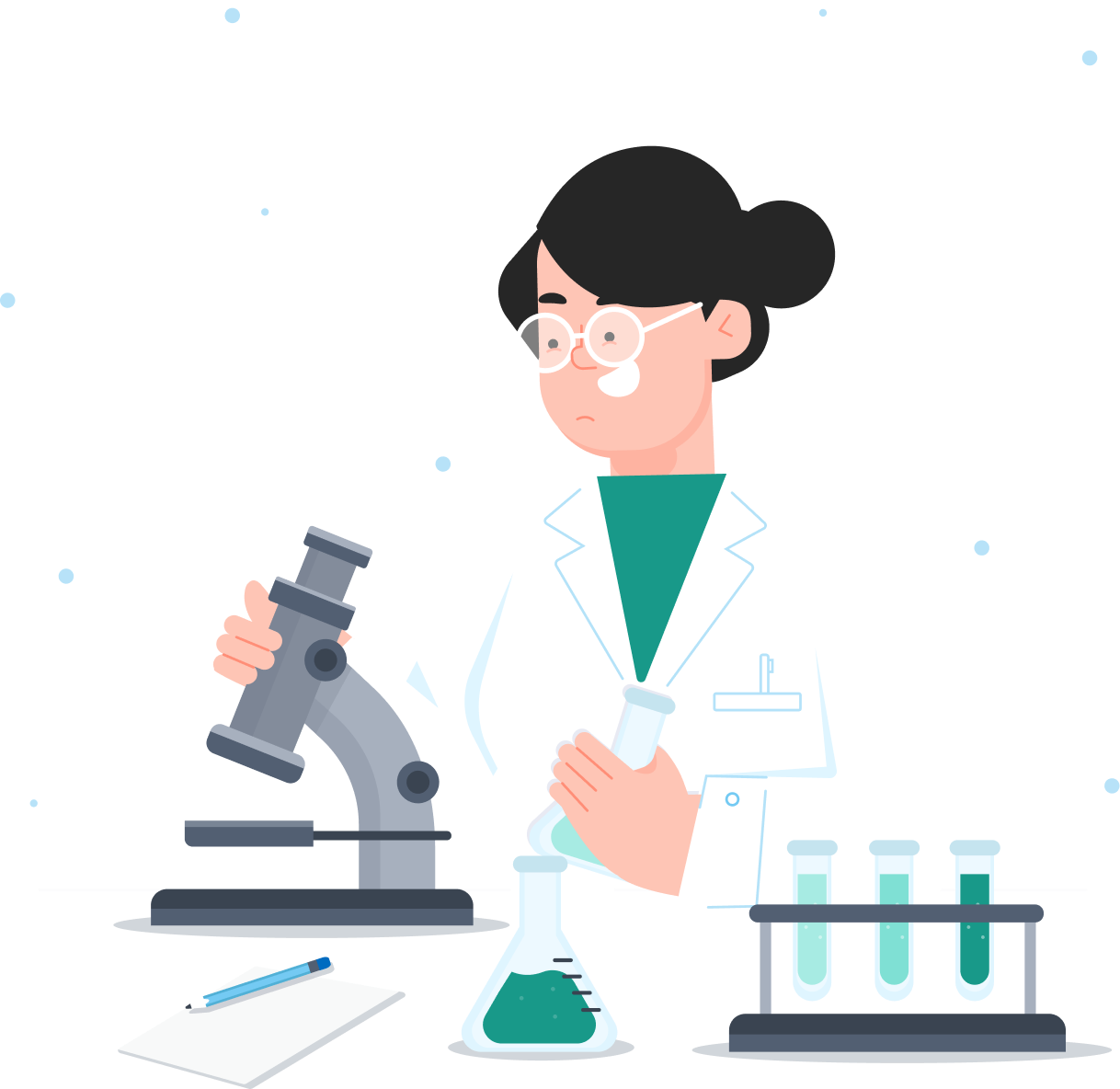The Living World – Complete Guide For Class 11 Biology Chapter 1

Welcome to iPrep, your Learning Super App. Our learning resources for Chapter 1, “The Living World,” in Class 11 Biology are meticulously designed to ensure students gain a comprehensive understanding of this essential topic. These resources include detailed notes, interactive exercises, and practical examples that cover the entire spectrum of key concepts. From fundamental principles of growth, reproduction, and metabolism to advanced topics in classification and taxonomy, our materials provide a thorough exploration of the living world. Through engaging activities and clear explanations, students will develop a robust foundation for understanding the diversity of life and the scientific frameworks used to study it.
What Is The Living World?
The concept of “The Living World” in Class 11 Biology delves into the foundational principles of life by exploring the essential characteristics that define living organisms. This includes understanding how organisms grow, reproduce, and exhibit metabolism, along with their ability to sense and respond to their environment. The chapter also emphasizes the importance of biodiversity and the systematic approach to classifying organisms. Through classification, organisms are grouped into hierarchical categories, such as Kingdom, Phylum, Class, Order, Family, Genus, and Species, based on their similarities and evolutionary relationships. Additionally, it introduces key taxonomical aids like herbariums, botanical gardens, and zoological parks, which play a crucial role in the identification and study of the vast diversity of life forms on Earth.
Characteristics of Living Organisms in The Living World
In The Living World, the defining characteristics of living organisms set them apart from non-living matter. These characteristics are fundamental to understanding how life operates at both the micro and macro levels. Let’s dive deeper into the essential traits that all living beings share, helping us grasp the remarkable diversity found in The Living World.
1. Growth
One of the most visible characteristics of The Living World is growth. All living organisms undergo growth, though the way they grow may differ across species and kingdoms.
- Increase in Cell Number: In The Living World, living organisms grow by increasing their cell count. Through the process of cell division, organisms like plants and animals develop from a single cell into complex multicellular beings.
- Increase in Cell Mass: Growth is not just about cell numbers; it also involves an increase in cell size and mass. Cells accumulate more material, contributing to the organism’s overall size and structure.
- Growth in Plants: Plants in The Living World exhibit continuous growth through cell division in specific regions called meristems, which allows them to elongate, thicken, and regenerate.
- Growth in Microorganisms: Even microorganisms, which are a crucial part of The Living World, grow by increasing in number through processes such as binary fission, rapidly expanding their population.
- Growth in Animals: In animals, growth occurs through a complex process of tissue development and organ formation. Animals grow during specific stages of their life cycles, and once they reach maturity, growth slows down or stops.
2. Reproduction
Reproduction is vital for the survival and continuity of species in The Living World. It ensures that life goes on, generation after generation.
- Asexual Reproduction: In The Living World, many organisms reproduce asexually, where a single parent produces offspring identical to itself. This can occur through:
- Budding: As seen in organisms like Hydra and yeast, budding involves the formation of a new individual from an outgrowth of the parent.
- Fragmentation: In some organisms like starfish, an individual can regenerate into new organisms from fragments of the original body.
- Spore Formation: Organisms like fungi in The Living World reproduce by forming spores, which are hardy and capable of growing into a new individual under favorable conditions.
- Binary and Multiple Fission: Common in unicellular organisms like bacteria, where the parent cell divides into two (binary fission) or more (multiple fission) identical cells.
- Sexual Reproduction: Sexual reproduction in The Living World involves the fusion of gametes from two parents, leading to offspring that are genetically unique. This introduces genetic diversity, which is a driving force behind the evolution of life.
3. Metabolism
Metabolism is a hallmark of life in The Living World, as it encompasses all the chemical processes that allow organisms to maintain life. These biochemical reactions are essential for energy production, growth, and repair.
- Anabolism: Anabolism refers to the constructive processes in The Living World, where simple molecules are synthesized into complex ones. For example, plants use photosynthesis to convert carbon dioxide and water into glucose, a source of energy.
- Catabolism: Catabolism involves breaking down complex molecules into simpler ones to release energy. This energy is vital for carrying out various functions in The Living World, such as movement, digestion, and reproduction.
4. Sensitivity to the Environment
Living organisms in The Living World are highly responsive to their surroundings. This ability to sense changes and adapt is crucial for survival.
- Detection of Changes: Organisms can detect various changes in their external and internal environments, from fluctuations in temperature to the presence of predators. Plants in The Living World, for example, grow towards light (phototropism), while animals may flee in response to danger.
- Adaptive Responses: Once changes are detected, living beings in The Living World exhibit responses that help them adapt to those changes. For instance, humans sweat to regulate body temperature, while certain animals may hibernate during extreme weather conditions.
Biodiversity and Classification

Biodiversity
The Living World is incredibly diverse, with millions of species of organisms, each with its unique characteristics. This diversity, also known as biodiversity, is essential for the stability of ecosystems. It ensures that all organisms, from the smallest bacteria to the largest mammals, play a role in the intricate web of life.
Nomenclature
Terminology is the system of naming organisms. There are specific codes for different kingdoms:
- International Code for Botanical Nomenclature (ICBN): Governs the naming of plants.
- International Code of Zoological Nomenclature (ICZN): Governs the naming of animals.
Classification
Classification is the method of organizing living organisms into categories based on their similarities and differences. Key concepts include:
Taxa
Taxa are groups of organisms classified at various levels.
Taxonomy Hierarchy
The hierarchy of taxonomy includes several levels:
- Kingdom: The highest level of classification. All animals are classified under Kingdom Animalia.
- Phylum/Division: Groups of related classes. For example, Phylum Chordata includes Pisces, Amphibia, Reptilia, Aves, and Mammals.
- Class: Groups of related orders. For example, the class Mammalia includes the orders Primata and Carnivora.
- Order: Groups of families with shared characteristics. For example, the order Carnivora includes the families Felidae and Canidae.
- Family: Groups of related genera. For example, Panthera and Felis belong to the family Felidae.
- Genus: A group of related species. For example, Panthera includes Lion (Panthera leo), Leopard (Panthera pardus), and Tiger (Panthera tigris).
- Species: A group of individuals with fundamental similarities. Examples include:
- Panthera leo (Lion)
- Mangifera indica (Mango)
- Homo sapiens (Humans)
- Solanum tuberosum (Potato)
Taxonomical Aids
To assist in the identification and classification of organisms, several tools and resources are used:
- Herbarium: A collection of preserved plant specimens used for study and reference.
- Botanical Gardens: Institutions where plants are cultivated and studied provide valuable research and educational resources.
- Museum: Facilities that house preserved specimens of plants, animals, and fossils for study and exhibition.
- Zoological Parks: Places dedicated to the conservation and study of animals in their natural or simulated habitats.
- Key: A tool used for identifying species based on a series of choices about their observable characteristics.
Conclusion
This comprehensive guide on “The Living World” provides an in-depth exploration of the fundamental aspects outlined in CBSE Class 11 Biology. It covers the core characteristics that define life, such as growth, reproduction, and metabolism, along with the ability of organisms to sense and adapt to their surroundings. The guide delves into the intricate process of biological classification, illustrating how organisms are systematically categorized into hierarchical levels from Kingdom and Phylum to Genus and Species based on their shared features and evolutionary history.
The guide further explains the principles of nomenclature, including the International Codes for Botanical and Zoological Nomenclature, which standardize the naming of organisms. Emphasizing the significance of biodiversity, the guide introduces various taxonomical aids such as herbariums, botanical gardens, museums, and zoological parks, which are essential for the documentation, preservation, and study of the planet’s diverse life forms. Overall, this guide serves as a crucial resource for understanding the complex organization of living organisms and their place in the natural world.
Practice questions on Chapter 1 - The Living World
Get your free Chapter 1 - The Living World practice quiz of 20+ questions & detailed solutions
Practice Now








